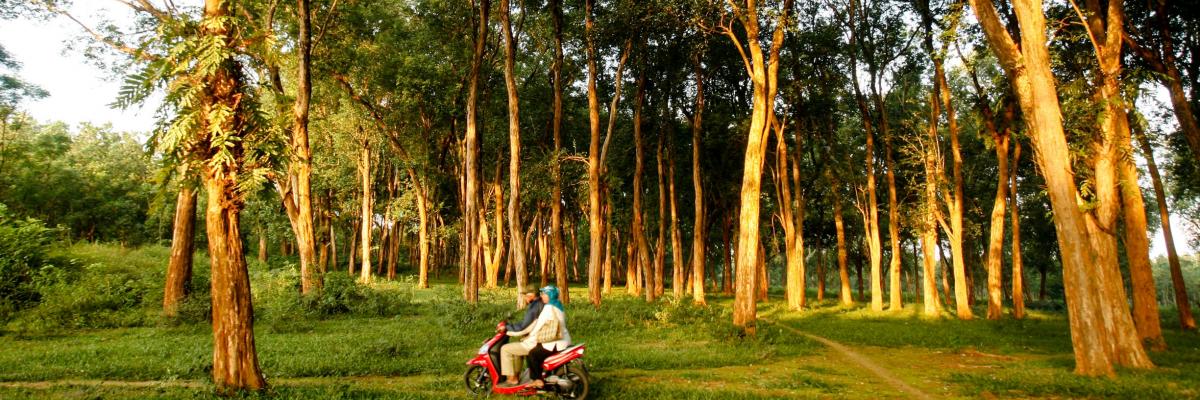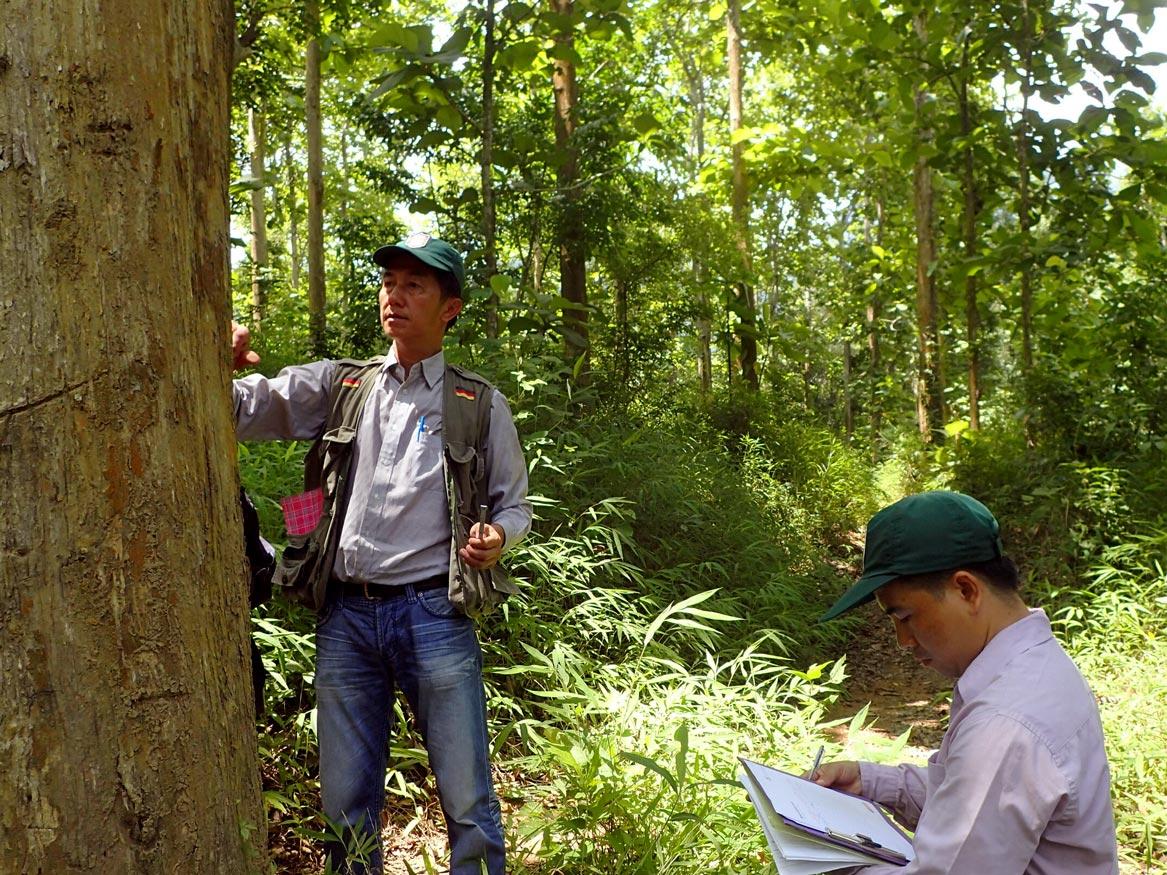DNA tracking of timber to increase forest sustainability and integrity
University of Adelaide scientists have created a DNA fingerprint map to link teak timber back to its plantation of origin and help reduce the $40 billion illicit trade of timber in the Asia Pacific region.
Researchers from the School of Biological Sciences teamed up with Double Helix Tracking Technologies on the Australian Centre for International Agricultural Research (ACIAR) funded project to deliver innovative solutions to smallholder forest owners in the Asia Pacific region. ACIAR projects show how forestry innovations can have an impact and support better environmental and economic outcomes.

Teak forest plantation - Jepara, Central Java, Indonesia.
Image by Photo by Murdani Usman/CIFOR (CC BY-NC-ND 2.0)
"Teak is one of the most commercially important timbers in the world. Its timber is durable and water resistant, and is used for boats, buildings, veneer, carving, turnings, and furniture. Illegally logged timber products, including teak, can enter markets through mixing legitimate supply chains and associated document fraud."ACIAR
The ability to trace timber to its source helps verify integrity claims and reduce the trade in illegal timber for the economic benefit of producer countries and to improve the long-term sustainability of teak production.
The project involved the use of a DNA-based chain of custody system to secure legally harvested teak from Southeast Asian countries, including Indonesia, Laos and Myanmar.
Samples of teak sent to the University of Adelaide were used to develop a DNA reference map of genetic variation for the valued species. Samples were sourced from natural forests in Myanmar, Laos and Thailand, and plantation teak stands in Laos and Indonesia.
Work is underway to apply the same process to teak from the Solomon Islands and Papua New Guinea.

A teak tree is sampled in Laos during DNA sampling training. Thanks to a DNA fingerprint map, teak timber can now be linked back to its plantation of origin to verify integrity claims. Photo by Double Helix Tracking Technologies
Authorities are a step closer to shutting down the illegal trade in timber from Southeast Asia and the Pacific region.
DoubleHelix Chief Executive Officer, Mr Darren Thomas, says foresters in Southeast Asia are now improving forest management and documentation practices to authenticate the source of teak, but the global movement of illegal timber made further assurance necessary.
“One of the primary ways that illegal timber enters the market is through being mixed into legitimate supply chains, accompanied by fraudulent documents,” Mr Thomas says.
“In some countries, teak logs confiscated from illegal logging groups are resold into the market rather than destroyed so this has become controversial for customers in the European Union (EU), which requires illegal timber to be excluded from supply chains completely.
‘While mixing of legal and confiscated timber can be controlled in certified supply chains, the EU has raised doubts as to the reliability of paper verification.”

Teak (Tectona grandis) log yard. Jepara, Central Java, Indonesia.
Photo by Murdani Usman/CIFOR (CC BY-NC-ND 2.0)
Project leader, Professor Andrew Lowe from the University of Adelaide says the DNA map shows at least five distinct genetic clusters for teak in just one of the Southeast Asian countries studied. Allowing for a 100 km tolerance, this DNA map accurately traced back 99% of blind-test samples to their claimed origin.
“We trialled two methods that worked for large-scale industrial state-owned plantations in Indonesia—the first to check that logs at different points in the supply chain came from the same tree, which proved 90% accurate,” Professor Lowe says.
“The second tested whether logs matched the genetic profile of their source plantation, and this was 100% accurate, and that’s what we recommend for large-scale and smallholder plantations.”
Scientists also applied DNA fingerprinting methods to match those blind samples of sawn timber from the log yard and cut tree stumps, and accurately traced each piece of timber to its individual tree stump in the forest or plantation.
A DNA chain of custody system could also be designed to support a simplified, low-cost certification or third-party verification program to support smallholders’ sale of timber from community forests into higher-value markets.
DNA tracking has previously been used in the USA to successfully prosecute the illegal trade in bigleaf maple. It is hoped this teak DNA map will be used in the same way to abolish illegally traded teak and support a sustainable teak supply chain.
Sciences research in focus
- This article is adapted from the original written by Ken Hickson, titled ‘Innovations helping smallholder farmers & forest-owners add sustainability and integrity to their enterprise’.
- Final project report: Developing DNA-based chain of custody systems for legally sourced teak - ACIAR
- Partners in Research for Development, Issue 4 - ACIAR
Project partners: Eleanor Dormontt, Andrew Lowe, Rainbo Belton, Maxwell Burdick, Kor-jent van Dijk, Bianca Dunker, Soo Lim Goh, Martin Golman,Mehm Ko Ko Gyi, Duncan Jardine, Dona Kireta, Avalyn Lim, Arif Malik, I.L.G. Nurtjahjaningsih, Richard Pakau, Dan Raymond, Anto Rimbawantu, Jomaine Tang, Darren Thomas, Wilson Tubulae, Hugo Volkaert, Vongvilai Vongkamsao, Thwe Thwe Win.
